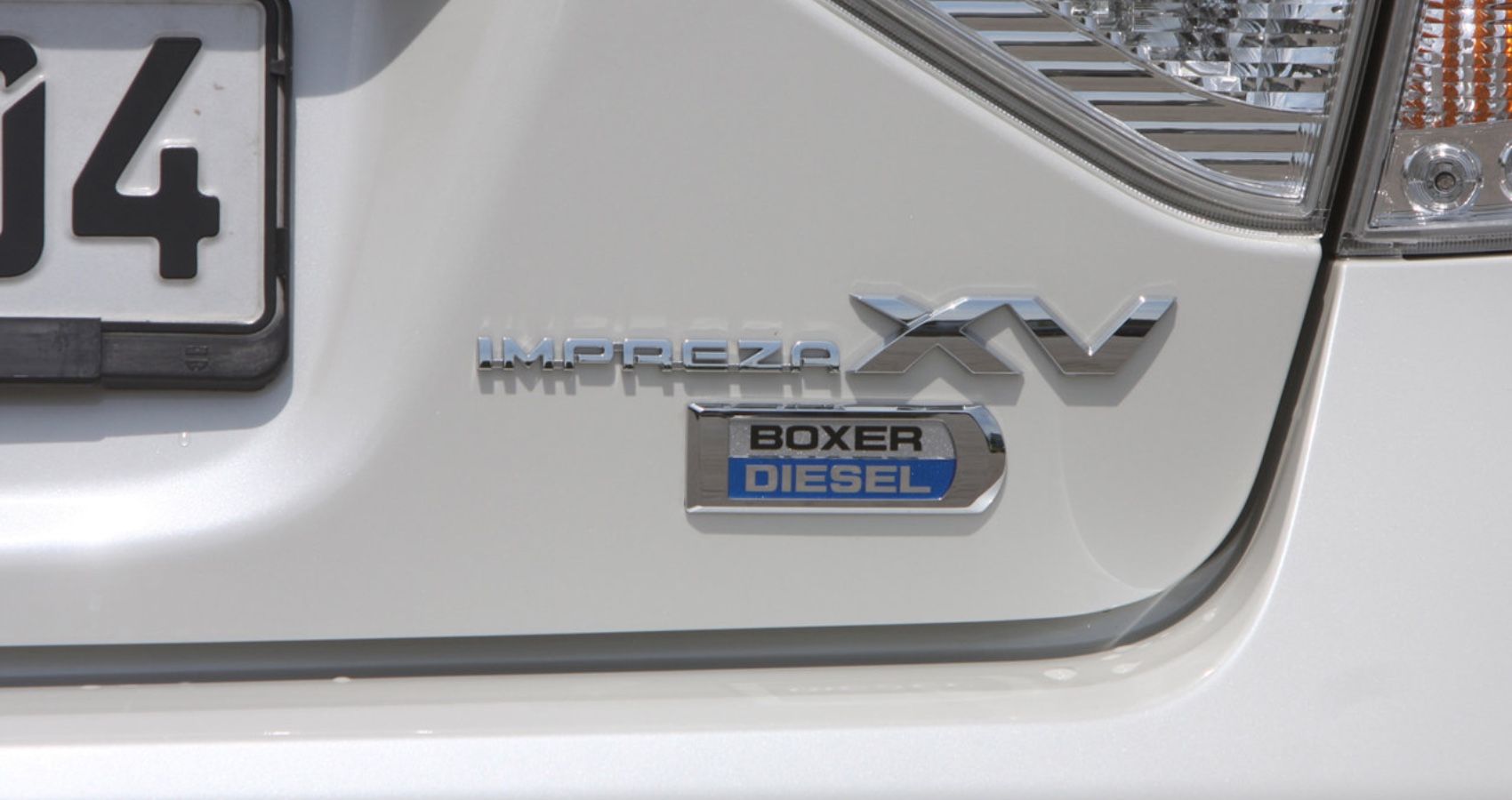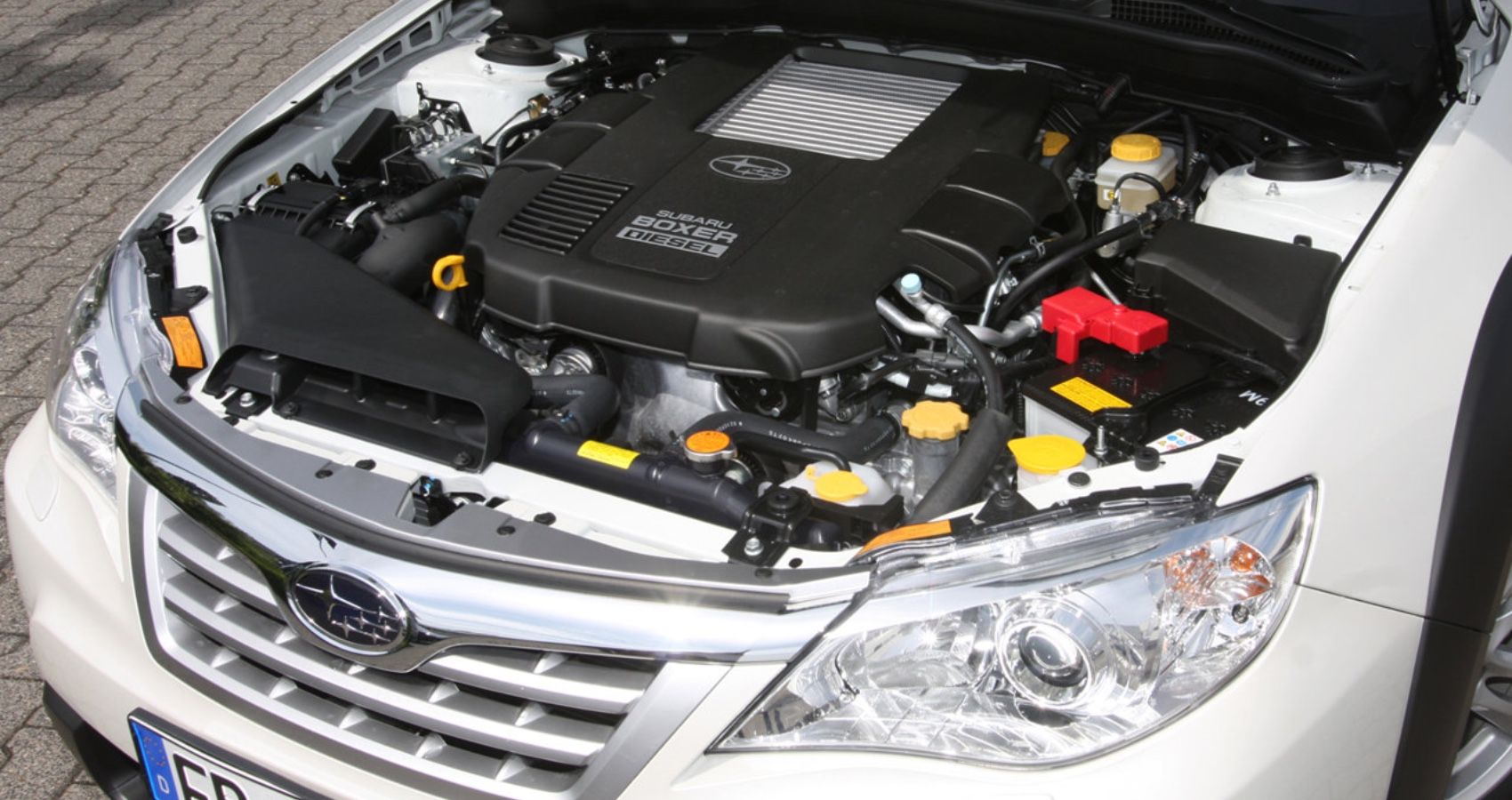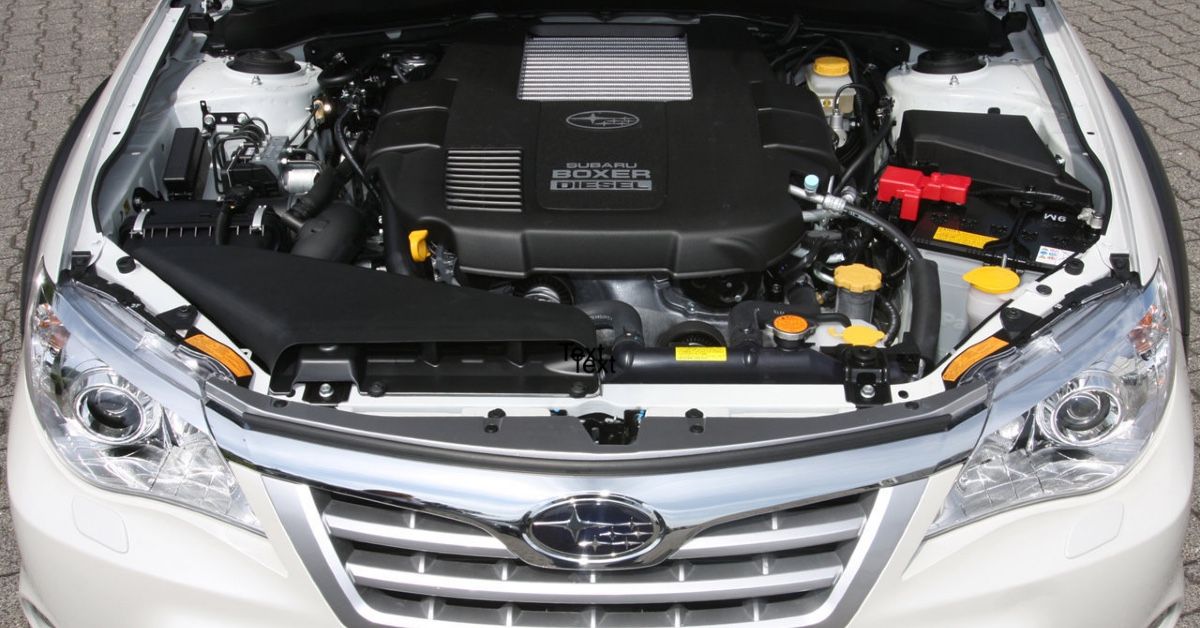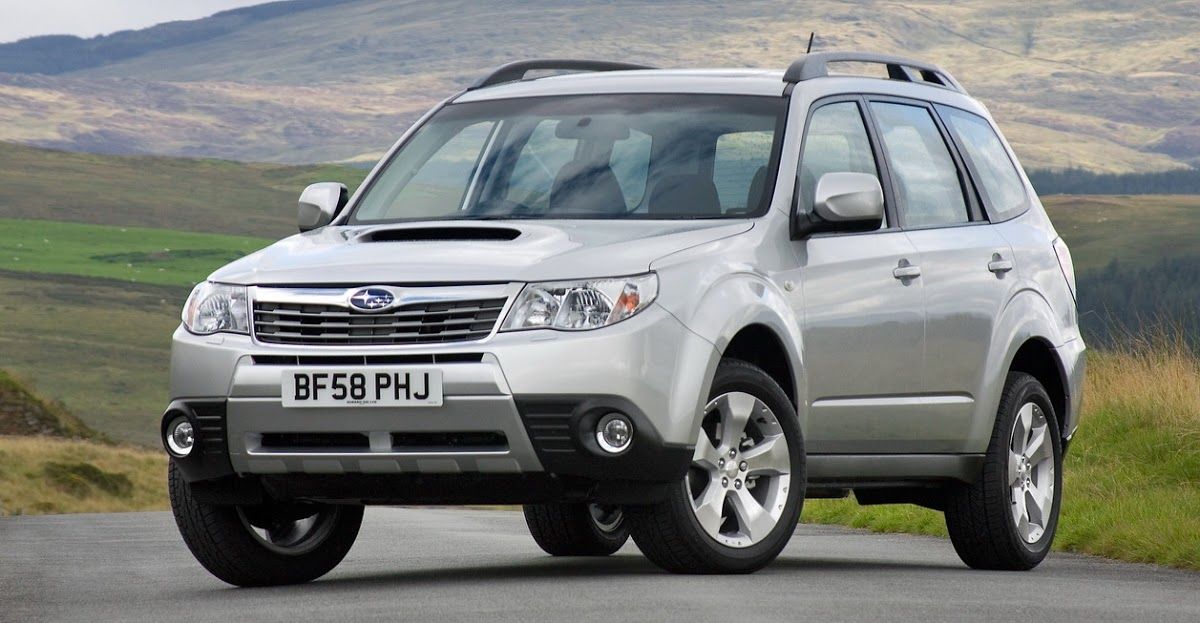As far as engines go, Subaru’s EJ and FA series are among the most recognized in the automotive space. You have the EJ20, EJ25, and FA20 as the flag bearers in the boxer-four lineup. That said, Subaru, in other parts of the globe, was known for making “non-performancy” daily runabouts, albeit in diesel form.
As it happens, in addition to some of the most throaty and emotive flat-four engines, the Japanese marque also introduced the world’s first flat-four diesel in a passenger car, dubbed the EE20. Subaru unveiled the world’s first boxer diesel engine at the 2007 Geneva Auto Show. Per the announcement in Geneva, the EE20 was sold initially in the Subaru Legacy (wagon and sedan) and the Subaru Outback for the European market.
However, the boxer engine wasn’t particularly robust. As is popular with many Subaru engines, reliability isn’t their forte, and the EE20 was no exception. Admittedly, in Subaru’s defense, there are engines that have surpassed hundreds of thousands of miles with just basic maintenance and no serious fettling. Earlier EE20s, however, do not fall in that category.
In this article, we’ll be diving deep and discussing all things EE20. More specifically, about its reliability, problems, and why it wasn’t necessarily a masterstroke from the folks at Subaru.
Meet The Subaru EE20 Flat-four Diesel Engine
The EE20 engine was conceptualized for Subaru’s entry into Europe’s increasingly popular diesel segment. Fuji Heavy Industries (FHI)—Subaru’s parent company—spent three years developing the EE20. After a decent reception following its 2007 reveal, Subaru, late next year, extended the diesel lineup by offering a slightly detuned version for the Forester and Impreza models sold in the European market.
The engine in question is a 2.0L DOHC turbo flat-four, producing 150 horsepower (145 hp in some versions) and 260 lb-ft of torque. In terms of technical specifications, you get a 1,998cc engine, four valves per cylinder with 86 mm bore and 86 mm stroke. The diesel engine had a very square design, ran 16.3:1 compression, and redlined at 4,750 rpm. EE20 engines were initially introduced with Euro-4 compliance, however, later stages saw the engine family becoming Euro-5 and Euro-6 compliant.
In 2016, citing increasingly stringent emissions standards, the top brass at Subaru halted further development of the EE20. And in March 2018, Subaru’s parent company discontinued diesel engine production, shifting its focus to plug-in hybrids and electric vehicles.
Let’s Talk Subaru EE20 Problems And Reliability
Compared to its adversaries, Subaru is a bit behind when it comes to being a reliable transport. However, that’s not necessarily the case with all Subarus. There are examples of Legacys and Outbacks registering 200k miles without any serious issues. But that doesn’t mean all Legacys, Outbacks, Foresters, and Imprezas with the EE20 are super reliable. It boils down to a few basic things like routine maintenance, conservative driving, and engine design. The latter being a problem in early EE20s.
It’s worth noting that mileage (in the context of old cars) isn’t that accurate of a metric when it comes to reliability. The reason is that a high mileage car that’s been cared for could be far more reliable than a beat-up car that’s done 80k. It goes to show that if you take care of something, it will last.
Okay, so what about the EE20’s reliability? Forum members have mixed reviews, with most owners claiming the engine being problematic. Some of the key issues were DPF (Diesel Particulate Filter) soot/regeneration, oil dilution, and associated emission control issues. Additional problems were major loss of power/responsiveness, a ropey gearbox, a weak clutch, failing glow plugs, and leaks in the induction system.
Perhaps the most commonly discussed problem with the EE20 is the crankshaft or bottom-end failure, which is a big no-no in any car, let alone a Subaru. However, it’s common in most Euro-4 engines (and some Euro-5 versions) made between 2008 and 2013. Euro-6 EE20 owners haven’t reported experiencing crankshaft breakages or the block cracking.
Why Are Subaru EE20 Crankshafts And Blocks Failing?
According to a forum member, the reason why EE20 crankshafts are breaking is due to the engine design. More specifically, the way the block is manufactured. By design, the EE20 diesel blocks have an aluminum casting with steel inserts in the crankshaft supporting bridges, as opposed to having one solid piece of aluminum. When the cylinders and undersides were machined, the machining tool left stress cracks in the metal, which weakened the structural integrity of the bridges.
The cracks develop further during regular usage, extend to the crankshaft and then to the steel insert, leading them to crack and fail. Failure mileage is typically between 80,000 and 130,000 kilometers (approximately 50,000 and 80,000 miles). That said, it’s a matter of luck. Some users have experienced failure at extremely low odometer readings, while others were fortunate to have escaped without issues until 200,000 kilometers.
Sources: Subaru Forester Forum






More Stories
Fleet Services: The Importance of Regular Diesel Maintenance and Inspections
M&D acquires Turbo Diesel & Electric, adding six branch locations
Twin-Turbo 5.9L Cummins-Powered Lamborghini – Engine Builder Magazine